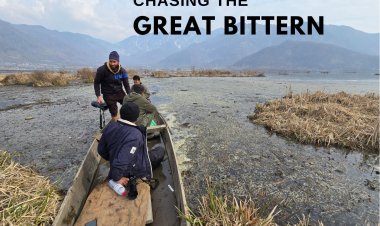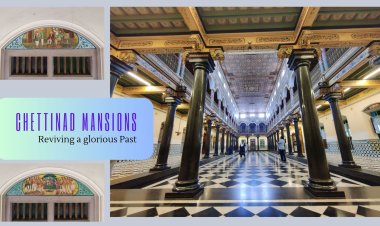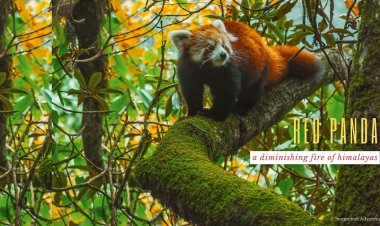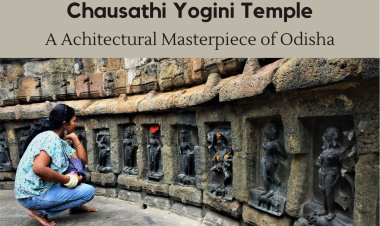Birdwatchers Paradise - Purbasthali
Arrival of winter, a sleepy village in eastern region of India called Purbasthali located about 120 kms from metropolitan city Kolkata transforms into an avian haven.When silence is broken from dawn to dusk with the arrival of feathered friends from halfway across the world. The Ox Bow Lake formed at Chupi and Kasthashali to become home to thousands of migratory birds. The crystal clear waters harbour more than 230 species of local and migratory birds. Where boatmen are naturalists, steering local country boats !It has not got a tag as Sanctuary, but definitely home for bird species !
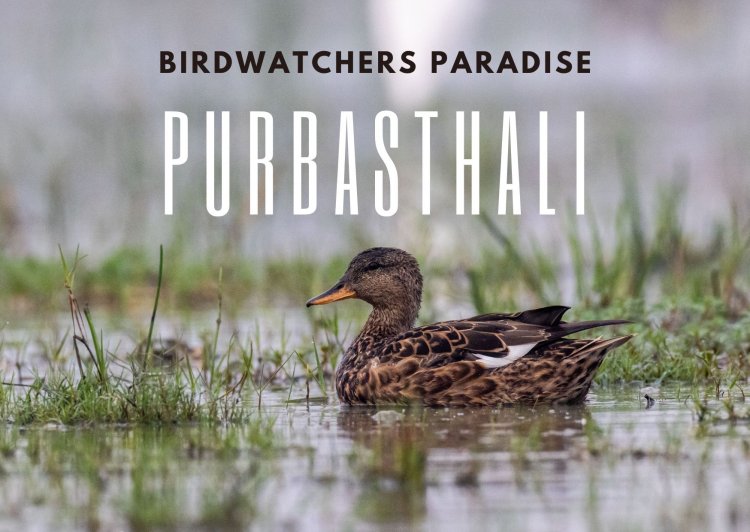
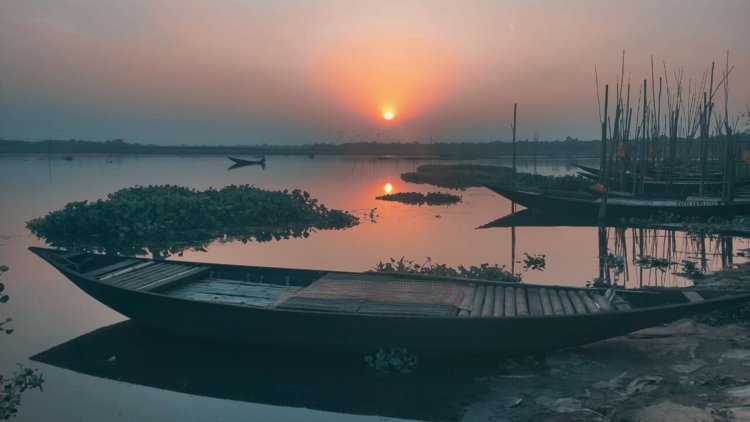
To the Avian haven again
A 2 hour journey by Katihar Express from Howrah, brought me to Naba dwip Railway station by 4 pm which is about 11 km from Purbasthali.We started inquiring around for transport to reach “ Chupi Kasthashali Pakhiralay ”. Locals told us it’s about 18 km odd kms from the station and ‘Totos’ or the battery operated rickshaws are available. So we bargained on the fare, settled at Rs.450 /- and boarded the rickety contraption.
Nearly 30 minutes of bumpy ride through countryside with several intermittent moments finally reached our destination.
The driver Deepak was a pretty friendly and a middle aged guy. He was talking about the birds and how the locals were involved in ensuring that Purbashali remains a safe sanctuary for the birds. People come here for the birds and he realizes that this drives the local economy to a large extent.He was happy when he came to that we are from Bangalore.
We checked into the room, a budget stay for 2 nights.We reached the lakeside, it was huge, calm, spreading miles before our eyes. We could already see flocks of birds flying on the water, we could hear to the sound of Indian Scops owl in the mango grove and even saw scats of civet cats in the bushes.
We witnessed the sunset,the whole wetland draped in colours added beauty to the place.After a cosensus with our boatman Jayanta we decided to head to Ganga, to photograph Ospreys which was around 1.5 hours ferry point.
We woke up next morning in the wee hours and the silence of the winter morning often broken by their shrill calls.
We boarded the local fisherman boat, Mr Jayanta a knowledgeable boatman cum guide was eagerly waiting for us.The sun was just making its way through the veil of mist and reilieve itself from clutches of clouds. The golden light was enough to energize us.
As we moved forward we could see a array of birdlife.About 78 species identified.
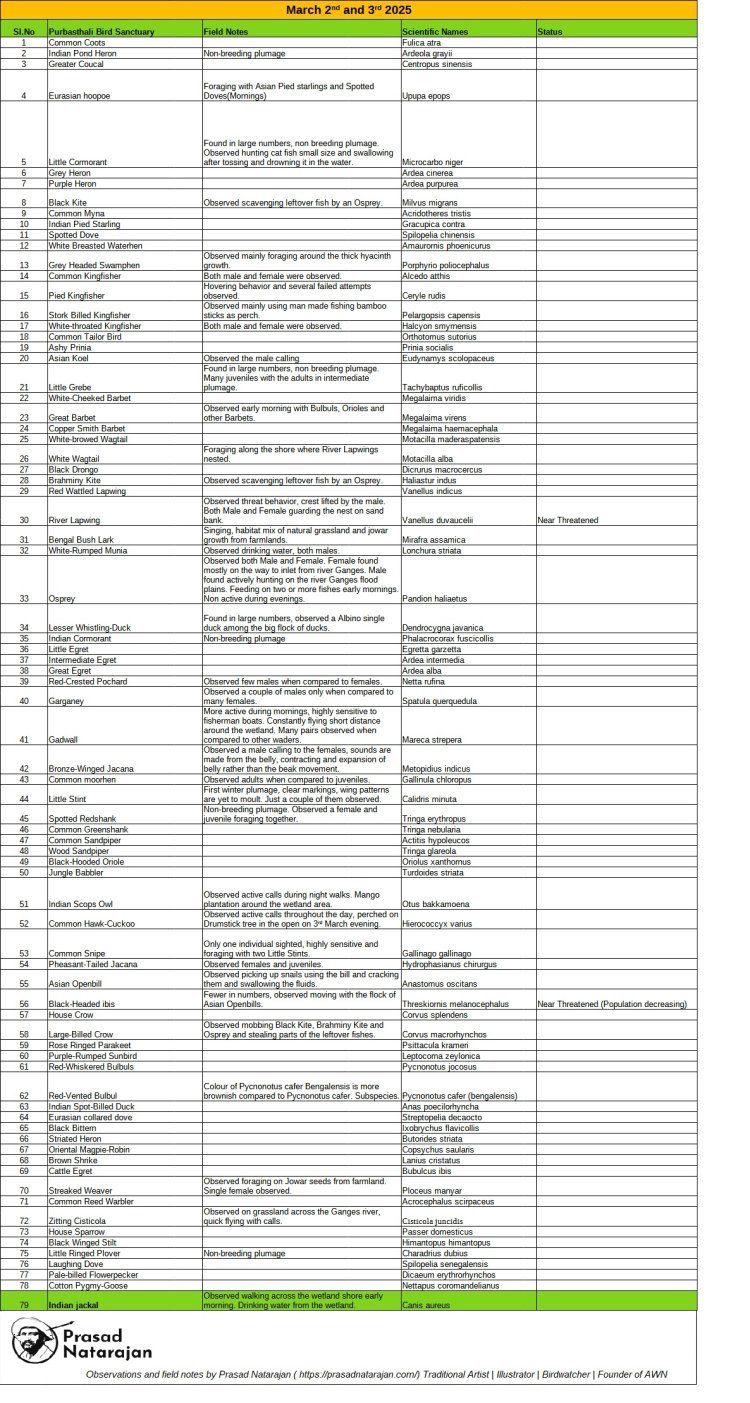 King Fishers
King Fishers
These vibrant species with disctinct plumage which are commonly seen near to water bodies and synonymous with name.The white throated Kingfisher, Pied Kingfisher and Common Kingfisher.
Regarded as expert hunters, perching on branches or rocks before diving into the water to catch their prey with their sharp, dagger-like bills.
Watching them the way they hunt for fish, crab or frog underwater and carry it back to their perch, beat the catch to death on a branch and then consume the fish head first by tossing it in the air was a sight to behold !
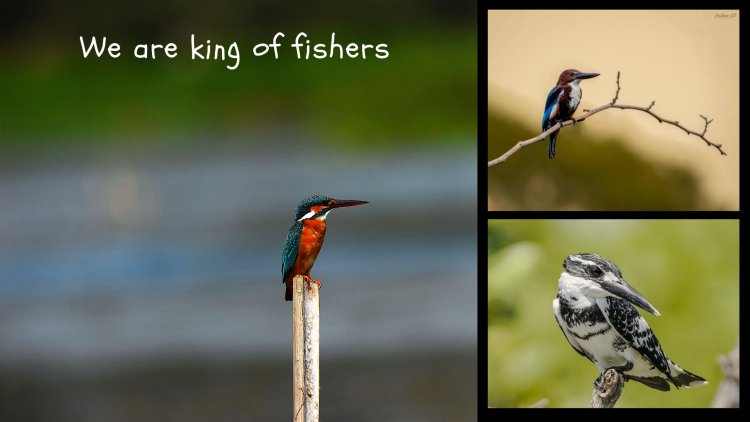
Golden Jackal
Scientific name: Canis aureus

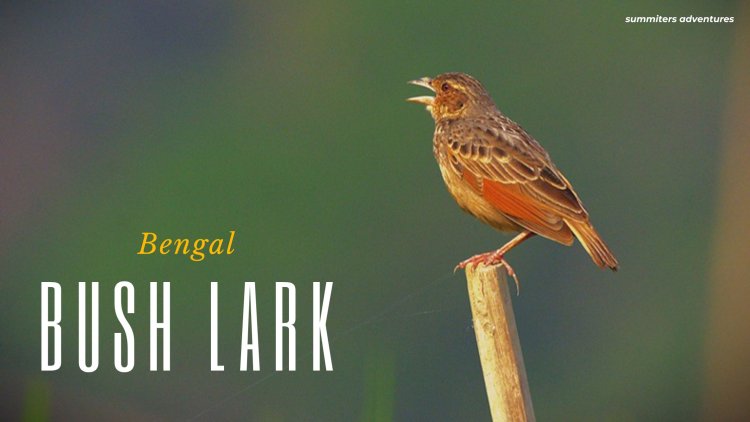
Osprey
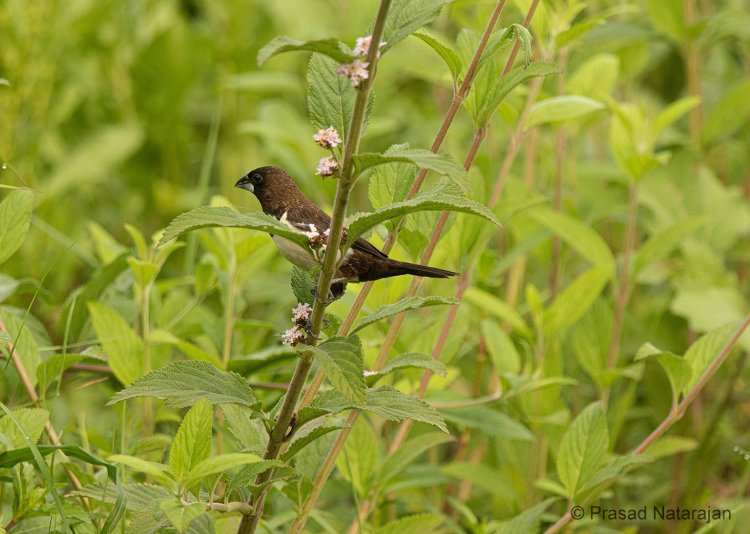
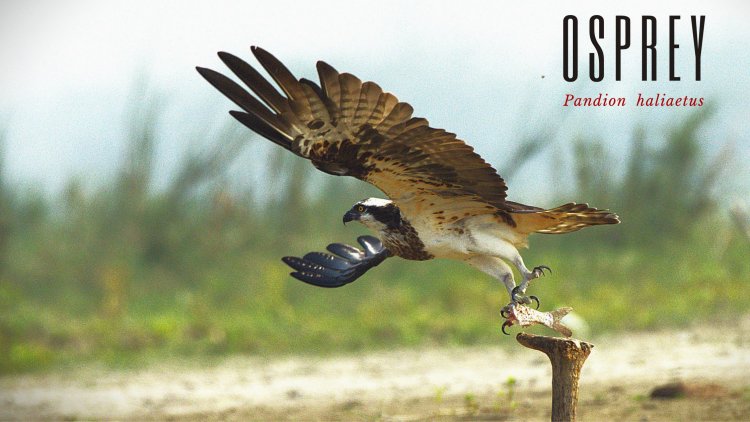

River Lapwing
Conservation status: Near Threatened
A pair of lapwings with a black, white and buff-coloured appearance drew our attention and male was guarding its territory and looked like it was moving restless.The female was at nest on the ground.
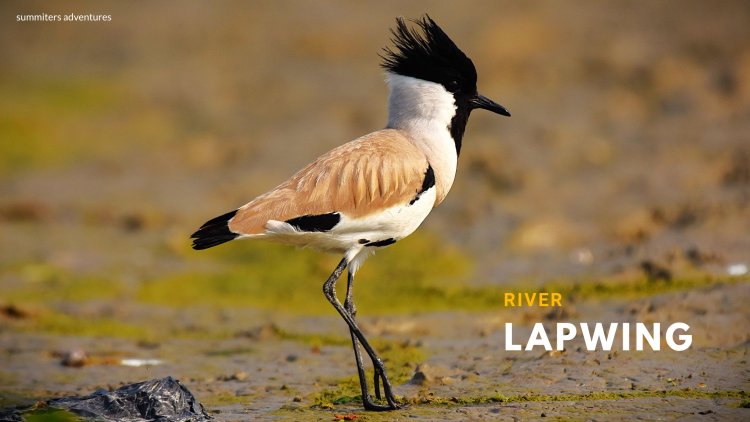
Lesser whistling duck
A flock of Lesser Whistling Ducks. Dominating the lake, few in lake and few in flight.It flew away as we appoached them.Extremely shy !
A medium-sized duck, mainly orange-brown in colour with scaly pattern on back, large head, thin neck and long legs.
They produce very prominent whistling sound while flying.They are very nocturnal and often rest during the day. They dabble as well as dive in water. During the day i could see male in courtship which involves the male facing the female and dipping and raising its bill in the water and swimming around the female

Asian Openbill
A large stork inhabiting the wetland was busy in feeding a snail.It is said to be their favourite prey.The Asian openbill or Asian openbill stork is a large wading bird in the stork family. This distinctive stork is found mainly in the Indian subcontinent and Southeast Asia. It is greyish or white with glossy black wings
The Asian openbill stork is predominantly greyish (non-breeding season) or white (breeding season) with glossy black wings and tail that have a green or purple sheen.
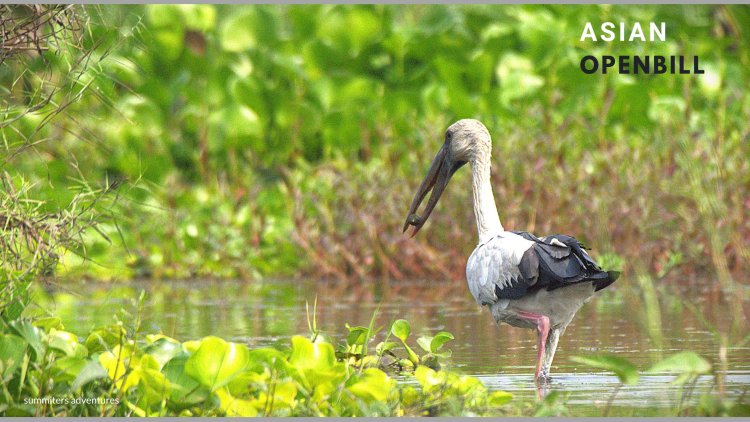
Pheasant tailed Jacana
Scientific name: Hydrophasianus chirurgus
This bird been active on floating water hyacinth, a weed known scientifically as Eichhornia crassipes, like all other jacanas they have elongated toes and nails that enable them to walk on floating vegetation in shallow lakes, their preferred habitat.
They are the only species in 8 found in the world of jacanas that migrate long distances and have different non-breeding and breeding plumages. The pheasant- tailed jacana normally forages by swimming or by walking on aquatic vegetation.
This distinctive polyandrous species where the males raising the chicks.
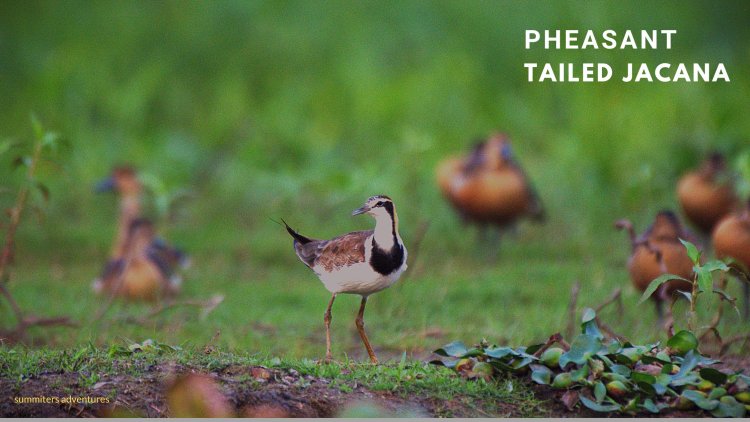
Bronze winged Jacana
Scientific name: Metopidius indicus
Coservation status - Least concern
This wetland bird found foraging the floating hyacinth weed was sporting a attractive plumage.A wader with long leges for balancing over floating vegetation.Unique thing about these birds is females are larger and maintain harems.Where as males incubate eggs and take care of young and defend territories.The male even carry chicks for safety and when they are in danger.
Both male and female look similar in appearence.The female maintain harems and have male sex partners during th monsoon season.
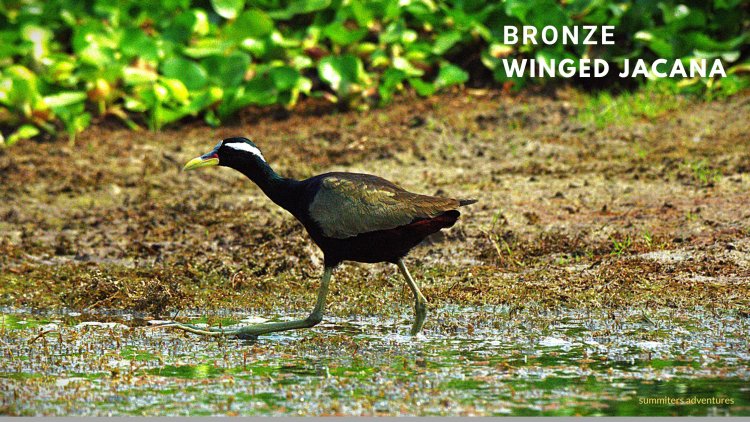
Red Crested Pochard
Scientific name: Netta rufina
Flocks of Red crested pochards frequent the lake during winter. Often referred to as 'the king of Purbasthali', the males are absolutely stunning to behold. Here are a few shots of them in flight !
Its a phographers delight to capture them.
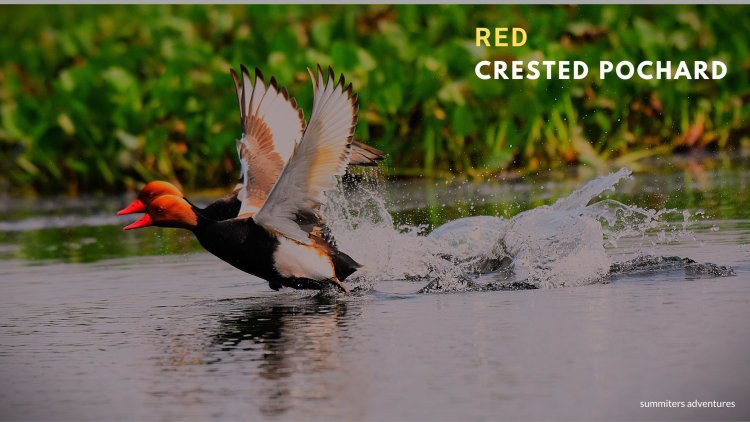
Garganey
Scientific Name: Spatula querquedula
Conservation Status: Least Cocern
As with so many duck species, the female Garganey does not have the showy plumage of the male of the species but this was a gorgeous, very dainty little duck. And, once I did eventually find her, she was a joy to watch.
It is also referred to as dabbling duck
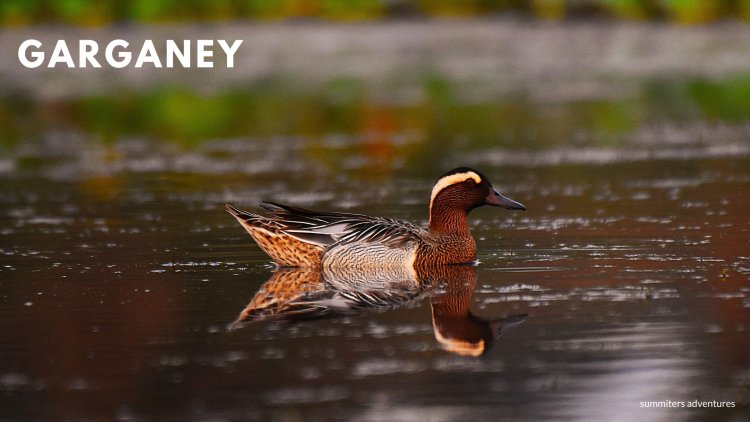
Cotton Pygmy Goose
The Cotton Pygmy-Goose is a small surface-feeding duck with a goose-like bill. The male has a white head, neck and underparts, dark glossy green upperparts and a narrow dark breast band. Females are duskier and have a dark stripe through the eye and a white eyebrow.
The Cotton Pygmy-goose uses tall standing dead trees with hollows located close to water for roosting and breeding.

As the boat neared to bank, the ball of fire going down adorned with call of Cormorant greeted me. Drew my attention for a last portrait !.The boatmen added they are considerd as a bird of good ' OMEN '
The Cormorant dives deep into the water to catch its prey, fully immersing itself in its goal. Similarly, to live with purpose, we must be willing to plunge into our depths, exploring the murky and uncertain waters of our hearts and emotions.
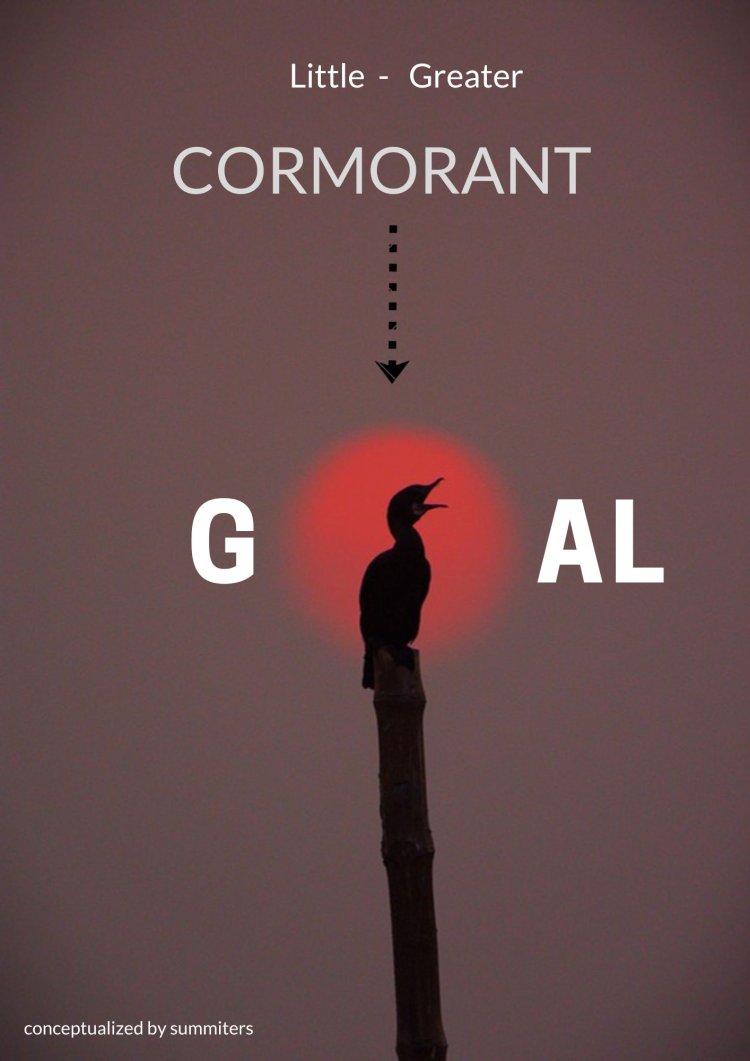
The Cormorant symbolizes the need for purpose—a guiding force that drives our actions and gives meaning to our lives. Purpose is more than a goal; it's the essence of why we strive, adapt, and persevere. Knowing your purpose requires clarity, courage, and a willingness to embrace the unknown.
If you are a bird lover and looking for a destination for birding in west bengal then Purbashali is a place to visit in winter. A place of solitude and enrichment, making every moment rewarding.
- Do carry binoculars 10 *50 size and cameras with long zoom lenses.Dont forget to carry a tripod. You will definitely have a rewarding experience.
- Do not make loud noises or play music while on the boat. Do not insist the boatman get too near to the birds so as to disturb them. It’s not a healthy practice
- Please do not wear any bright coloured clothing. Dark earthy colours like green, dark grey will be more pleasant
- Please do not make sudden movements, jerks on the boat in the excitement of spotting a bird or photographing it. This will destabilize the boat and it might capsize.As these boats are local boats made of wood.
- Don't forget that life is more precious than Gadgets !
- 2 Photographers accompanied by a boatman is ideal for a boat for photography
- Please do not litter.Keep the place serene !
- Wear a sun cap as it can be sunny in the day and warm clothing during winter.Weather can change anytime.
Fact File
By Road: Few love to drive and prefer going by road. For those who feel go as you wish in freedom rather than be bound by the train timings. However the not good and it can be a bone rattling journey.
Places to visit around if you feel interesting
1. Ambica Kalna - Known for Terracotta architecture
2. Guptipara - Temples and Sweet dish Sandesh
3. Sri Bati - Terrcotta temple
4. Bishnupur - Terracotta temples
5.Natungram - Owl village
6. Nabadwip - Birth place of chaitanya Mahaprabhu








